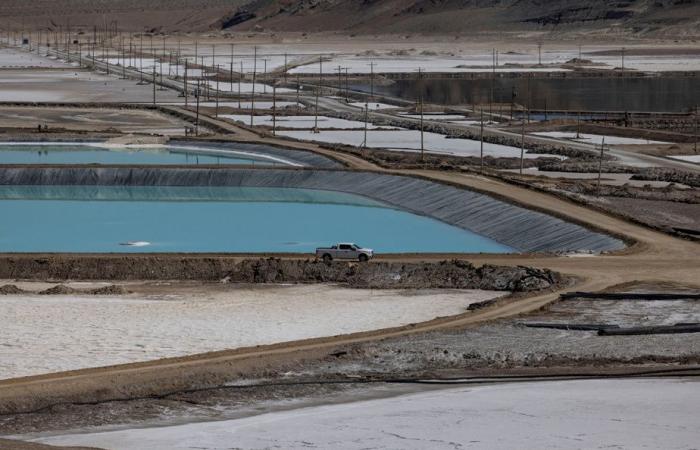(Paris) Copper, cobalt, nickel, lithium: the metals which transport or store electricity, essential for the energy transition to replace the oil responsible for global warming, will be increasingly recycled.
Published at 6:50 a.m.
Isabel MALSANG
Agence France-Presse
From Peru to France via the United States, sovereignty over access to strategic transition metals is panicking the planet, due to Chinese hegemony over both mineral supplies and refining.
“Between 35 and 70% of refining capacity is in the hands of China,” recalls the former president of the European Central Bank Mario Draghi in his recent report on competitiveness, outlining possible paths to achieve more sovereignty .
And the International Energy Agency (IEA) warned in mid-May of a risk of tension in supply, or even possible shortages of copper or lithium, essential for the deployment of low-carbon technologies such as electric cars or wind turbines.
Main reason given: the fall in the prices of lithium, nickel or cobalt in 2023 risks slowing down necessary mining investments.
During the annual UN climate conference (COP29), which opens on Monday in Azerbaijan, the International Council on Mining and Metals (ICMM) has planned no less than six different communications on the revival of mining.
But “the mining industry is facing a real financing problem today,” Moez Ajmi, energy specialist for Europe at the consulting firm EY, told AFP.
The needs are gigantic: in a traditional mine, we obtain only 3 grams of copper on average per tonne of earth excavated in the DRC Congo, and 0.5 grams per tonne in Chile, notes Christian Mion, mining extraction manager at EY.
A peak “in the mid-2030s”
However, all States encourage “mining”: the United States with its “IRA” law and subsidies seek to secure supplies of critical metals, Europe has also launched a “Critical mineral act”, which comes into force this year. Saudi Arabia has injected $500 million to establish its mining cadastre.
Oil giant ExxonMobil announced plans just a year ago to become the largest lithium producer in the United States by using its oil and gas extraction techniques to mine an underground lithium brine vein in Arkansas.
But due to the considerable amount of investments in equipment, salaries and transport, and the duration of decades for projects to emerge, other solutions are being considered.
“For me the most realistic solution is recycling,” notes Mr. Ajmi.
According to Mr. Draghi, the circularity of metals alone could meet 50% of global demand in the long term. According to Mr. Ajmi, a recycling sector could represent 10 to 15% of the GDP of developed countries within around fifteen years, “provided that banks and States support the projects”.
On condition also of developing ecosystems combining training plans, research and investors, as France did in the 1960s around the oil and nuclear sector, when for example it created the IFP Energies nouvelles research institute.
In a recent article entitled “Batteries, the mineral loop”, the specialized American think tank RMI even estimates that the peak of mining for strategic minerals intended for batteries should occur in the mid-2030s.
With the improvement of recycling techniques and the extension of the lifespan of batteries, the demand for virgin minerals intended for batteries could be zero by 2040, underlines RMI. What we call the “urban” recycling mine could then be sufficient to meet the needs of the electric battery market. The world would no longer need to dig.






